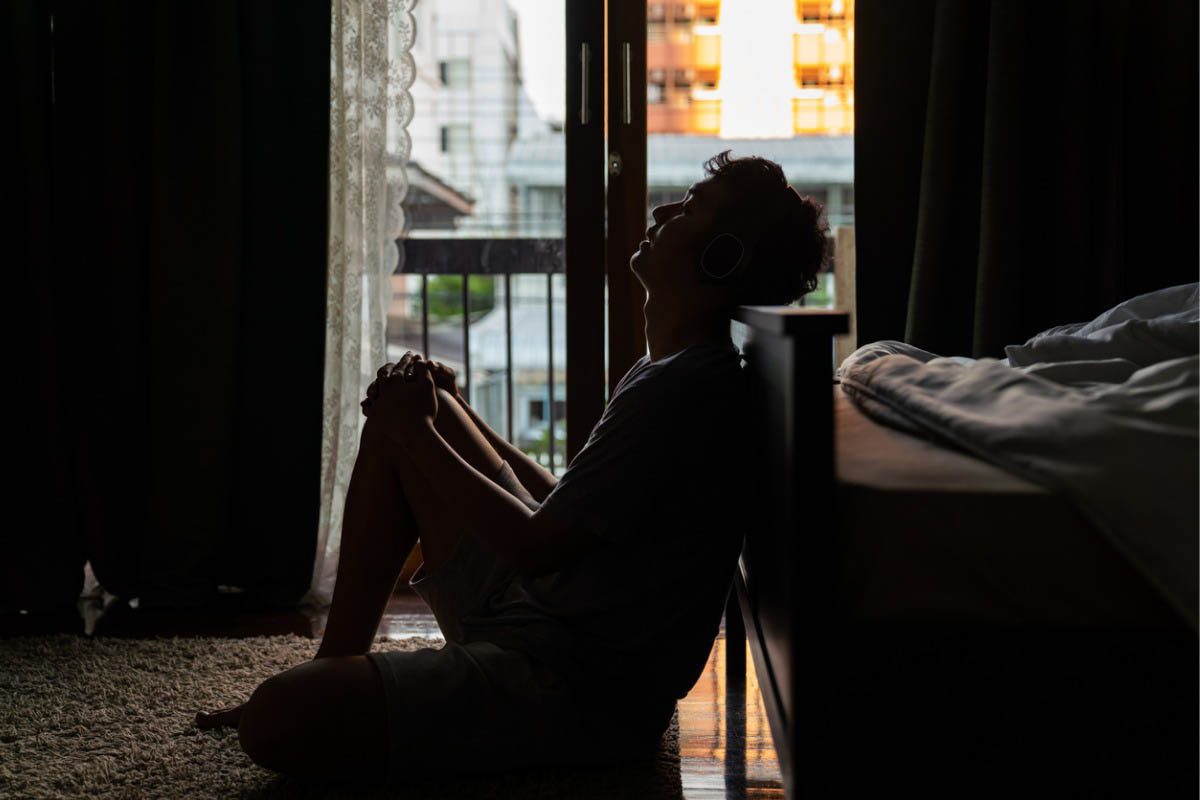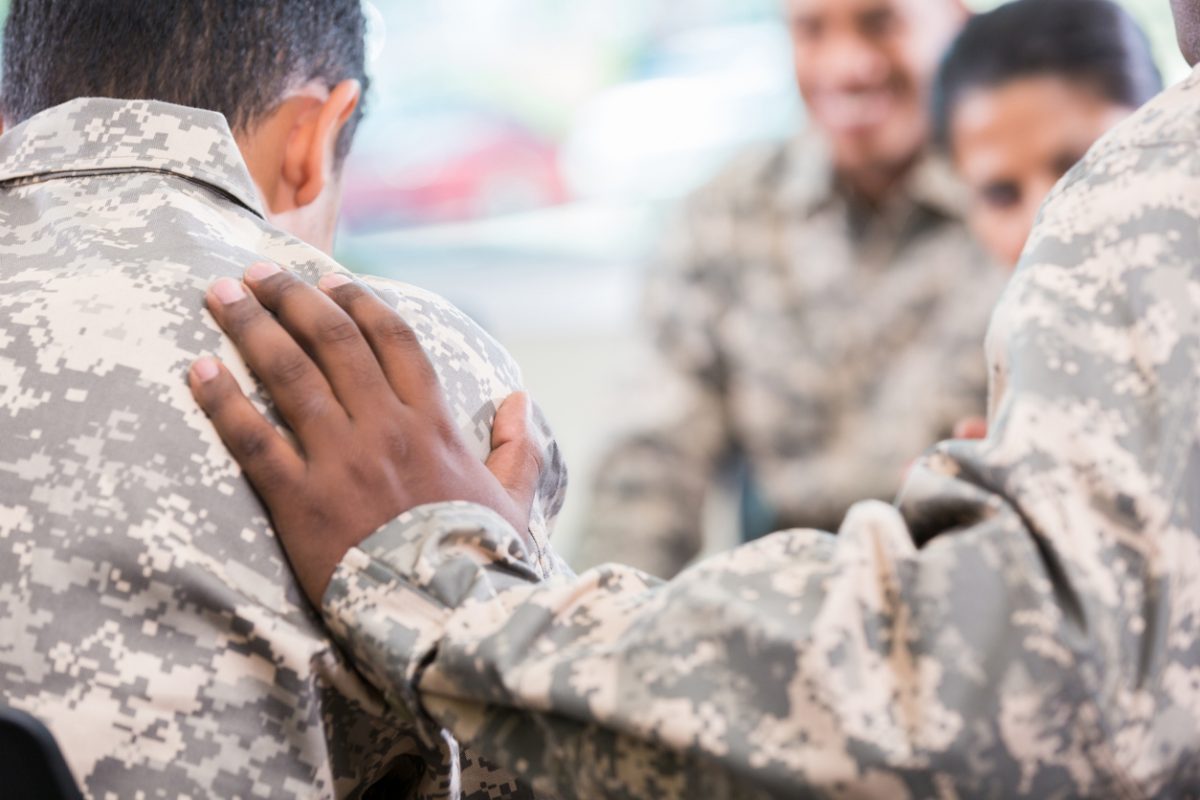Shooting oneself with a firearm is the leading method of suicide, accounting for over half of all such deaths. About two-thirds of the annual 33,000 gun-related fatalities in the United States are suicide—nearly 60 every day. Although most suicidal impulses are intense, they usually last for a short time, which makes prompt intervention imperative. Approximately 90% of those who attempt suicide and survive do not later die by suicide. However, attempts with a gun are usually fatal. A clear connection between firearms in the home and an increased risk of suicide exists. People who have access to these weapons are more likely to commit suicide than those who live in a home without a gun; thus, limiting access to guns decreases the opportunity for self-harm. Physicians should recommend that firearm access be removed from individuals with depression, suicidal ideations, drug abuse, impulsivity, or a mental or neurologic illness.


Guns and Suicide:
Are They Related?


ABSTRACT
Shooting oneself with a firearm is the leading method of suicide, accounting for over half of all such deaths. About two-thirds of the annual 33,000 gun-related fatalities in the United States are suicide—nearly 60 every day. Although most suicidal impulses are intense, they usually last for a short time, which makes prompt intervention imperative. Approximately 90% of those who attempt suicide and survive do not later die by suicide. However, attempts with a gun are usually fatal. A clear connection between firearms in the home and an increased risk of suicide exists. People who have access to these weapons are more likely to commit suicide than those who live in a home without a gun; thus, limiting access to guns decreases the opportunity for self-harm. Physicians should recommend that firearm access be removed from individuals with depression, suicidal ideations, drug abuse, impulsivity, or a mental or neurologic illness.
Prim Care Companion CNS Disord 2017;19(6):17br02116
https://doi.org/10.4088/PCC.17br02116
© Copyright 2017 Physicians Postgraduate Press, Inc.
aDepartment of Psychiatry and Behavioral Sciences, University of Louisville School of Medicine, Louisville, Kentucky
*Corresponding author: Steven Lippmann, MD, 401 East Chestnut St, Ste 610, University of Louisville Clinic, Louisville, KY 40202 ([email protected]).
Suicide is the second leading cause of death for Americans under age 40 years; among all age groups, over half of all suicides are gun related.1 Nearly 60 Americans commit suicide by gunshot each day.2 Currently, over 20 military veterans kill themselves each day.3 According to the Centers for Disease Control and Prevention, over 33,000 persons died by firearms in 2013.4 Firearms are also involved in most violence-related deaths, especially in cases of homicide.4
Guns are the most frequent method of completed suicide5—over 60% of deaths by gun are self-inflicted cases.6 In the United States, the rate of shooting oneself to death is nearly twice that of homicide by firearms.7 The United States has the highest rate of suicide by firearms compared to other developed countries.8 In 2009, the US rate of gun-related suicide was nearly the same as that of deaths in traffic accidents.8 Firearms are the most lethal means of attempting suicide—death occurs in approximately 85% of all persons wounded by a suicidal gunshot.9 Suicide attempts involving overdoses or laceration, for example, are much more common but far less fatal.1
The risk of suicide due to shootings in homes with a firearm present is typically 2 to 10 times higher than that of those without such a weapon.1 The degree and type of gun storage safety also influence this rate.1 The United States has more guns in civilian hands than any similar nation, reportedly more than one firearm for every person.10 White males living in the southern or western areas of the United States are most likely to have access to guns (in up to one-third of households).10 In regions with high firearm possession, suicides rates are higher.6
RISK FACTORS FOR GUN-RELATED SUICIDE
Impulsivity
Impulsive behavior is closely associated with suicide. Among people who made attempts, about 24% took less than 5 minutes between the decision to kill themselves and the attempt, and 70% occurred in under an hour.1 Impulsivity is a problem particularly with regard to youth suicides, especially those that occur during incidences of intoxication.1,9,10
Stress
Many suicidal crises are self-limited but often precipitated by an immediate stressor, such as the breakup of a romantic relationship, the loss of a job, or a legal difficulty. As the acute phase of the crisis passes, often the urge for killing oneself dissipates. Over 90% of people who survive a suicide attempt are glad to have remained alive, highlighting the temporary nature of many suicidal crises; even those who expected their actions to be lethal do not ultimately die by suicide.1 Partly for this reason, penal and psychiatric institutions restrict access to lethal means for individuals identified as being potentially suicidal.1 Similar precautions should be applied at home whenever a loved one is at risk for suicide.


- Physicians should recommend removal of firearm access for patients with depression or suicidal ideation, as well as those dealing with grief, substance abuse issues, and personal disappointment or turmoil.
- Doctors should discuss safe storage of firearms in the same way that they might handle smoking cessation, exercise, and seatbelt safety; open discussion about firearms is an appropriate strategy to improve patient care.
- Social discomfort, fear of upsetting some people, and legal constraints are barriers to successfully recommending safe storage of guns and ammunition.
Guns at Home
Homes with higher gun prevalence have higher rates of suicide.9 An increased risk of a firearm-induced suicide occurs within a week after a new purchase of a handgun and remains at an elevated rate for many years afterward.11 Research has shown that within the first year of purchase, handguns accounted for nearly 25% of all suicide deaths and about 52% of those among young women.9,12-14 The likeliest victim of a recent first-time gun purchase is the one who bought the weapon, usually by suicide.14
The higher risk of suicide in homes with firearms applies to the owners and also to their significant others and children.15 The presence of such a weapon in the home, no matter how it is stored, is a risk factor for completed suicide. States with more household gun ownership have higher rates of suicide.15 No association between gun possession and the rate of suicide by methods other than firearms has been found.4 The danger of these weapons in the home is greatest for adolescents, even for those with no known psychiatric disorders or substance abuse.10
Gun Storage
The way in which household guns and ammunition are stored is important, especially for the protection of young people. Adolescent suicide was 4 times as likely in homes with a loaded and unlocked firearm compared to homes in which firearms were stored unloaded and locked.4 The method of storage (separate from ammunition) and number of firearms also influence suicide rates. A higher risk is primarily associated with handguns compared to rifles.16 The same applies to unlocked versus locked and with loaded versus unloaded weapons.
Intoxication
There is a powerful relationship between alcohol and other drug intoxications and suicide and other violent deaths.17,18 The increase in youth alcohol abuse and firearm availability may be related to escalating suicide rates among young people.17,18
Psychiatric Disorders
The strongest individual risk factor for attempting suicide is having a psychiatric or substance abuse disorder. Many suicide deaths are associated with a mental or addictive illness, but it is not easy to identify in advance which individuals may actually kill themselves.11,19-21
THE PHYSICIAN’ S ROLE IN PREVENTION
Suicidal individuals are often indecisive about killing themselves, and the risk duration is often transient; therefore, reducing the availability of firearms during this period may prevent suicide.10 Two approaches are available to physicians to help suicidal individuals. First, identify and treat mental illness. Second, try to reduce the probability that suicide attempts will prove fatal (eg, by reducing access to lethal means). Physicians always focus on the first approach, but even those who care deeply about preventing suicide may be less familiar with the evidence linking gun access to suicide. Restriction of access to firearms is a proven suicide prevention technique.1 Physicians and their staff should recommend that families remove firearm access from individuals with depression or suicidal thoughts, those with a history of drug abuse, those who are impulsive, or those who have mental or neurologic illnesses.22-24 As mentioned previously, the weapons and ammunition should not be stored together.22-24
Prevention of at-risk individuals from access to firearms requires legislation like gun violence restraining orders (GVROs), safer storage, and "smart-gun" technology. The GVRO allows family members and law enforcement to formally request confiscation of firearms belonging to a person who may be dangerous to themselves or others. Implementation of such measures in the United States will require more legislative and governmental action. Society plays an important role in gun safety to better protect depressed and suicidal individuals. Legislation and public education about safer gun storage and smart-gun technology on all new firearms are required.25 One example of smart-gun technology refers to firearms that only shoot when in the hand of the registered owner.
Suicide rates are significantly diminished in states with low gun ownership and stringent firearm control laws.26 These laws and restrictions are particularly important with regard to handgun access, as handguns are the most common means of self-killing.26 Physicians and others who care for suicidal patients should inquire as to whether people at risk for self-injury have access to a firearm and discuss the implications.9 All patients at risk should be asked if guns and ammunition are available or if they intend to obtain them. Firearm safety management requires a team approach that includes the clinician, patient, family, and person designated to be responsible for the gun involved. A call-back from that individual is requested to confirm that weapons were removed or secured according to plan—verification is a critical factor. Access must be limited until the suicide risk subsides. These safety issues apply to inpatients after discharge, selected outpatients, and emergency departments.9 In addition, effective suicide prevention should focus on treating the underlying psychopathology.1
GUN LAWS
Although federal and state laws restrict access to firearms among people with mental illness, their contribution to public safety is small. Actually, only 3%-5% of violent acts are attributable to persons with serious psychopathology, and most of those behaviors do not involve guns.4 Even among psychiatric patients, only a small percentage are officially listed as having a condition that would limit firearm access. One key first step in advocating for gun safety is to make sure that firearms are kept unloaded, locked, and away from children or anyone who may be suicidal or intoxicated.1
The New Hampshire Gun Safety Coalition has established the "11 Commandments" for gun safety that recommends removing firearm access when someone is thought to be suicidal.27 Although the availability of such guidelines is helpful, adoption of these steps has proved to be suboptimal. In Florida, physicians were previously somewhat constrained from recording conversations about firearm access.24,28,29 This constraint discouraged discussion and left a gap in the patient assessment. However, in 2017, the 11th Circuit Court overruled this Florida law, and doctors are again free to talk with their patients about firearms in ways that are clinically relevant.30
Ten states have introduced legislation that restricts a physician’s ability to counsel patients about gun safety.1,4 Contrarily, there is some evidence reportedly stating that safe-storage gun laws do not always reduce accidental gun deaths or total suicides.31
CONCLUSION
Physicians should recommend that firearm access be removed from individuals with depression, suicidal ideations, drug abuse, impulsivity, or a mental or neurologic illness. Physicians should discuss safe storage of firearms in the same way that they might handle smoking cessation, exercise, and seatbelt safety; open discussion about firearms is an appropriate strategy to improve patient care.
Submitted: February 17, 2017; accepted July 31, 2017.
Published online: December 21, 2017.
Potential conflicts of interest: None.
Funding/support: None.
REFERENCES
1. Miller M, Hemenway D. Guns and suicide in the United States. N Engl J Med. 2008;359(10):989-991. PubMed CrossRef
2. Everytown for Gun Safety Support Fund. Firearm suicide in the United States. https://everytownresearch.org/firearm-suicide/#foot_note_1. 2017. Accessed November 1, 2017.
3. Shane L, Kime P. New VA study finds 20 veterans commit suicide each day. Military Times website. http://www.militarytimes.com/story/veterans/2016/07/07/va-suicide-20-daily-research/86788332/ 2016. Accessed April 15, 2017
4. Appelbaum PS, Swanson JW. Law & psychiatry: gun laws and mental illness: how sensible are the current restrictions? Psychiatr Serv. 2010;61(7):652-654. PubMed CrossRef
5. Oquendo MA. Psychiatrists have a role to play in latest gun law debates. American Psychiatric Association website. http://psychnews.psychiatryonline.org/doi/full/10.1176/appi.pn.2016.7b26. 2016. Accessed April 21, 2017.
6. Sanger- Katz M. Gun deaths are mostly suicides. The New York Times. https://www.nytimes.com/2015/10/09/upshot/gun-deaths-are-mostly-suicides.html. 2015. Accessed November 1, 2017.
7. Pew Research Center. Suicides account for more gun deaths. http://www.pewresearch.org/fact-tank/2013/05/24/suicides-account-for-most-gun-deaths/. 2013. Accessed November 1, 2017.
8. Briggs JT, Tabarrok A. Firearms and suicides in US states. Int Rev Law Econ. 2014;37:180-188. CrossRef
9. Simon RI. Gun safety management with patients at risk for suicide. Suicide Life Threat Behav. 2007;37(5):518-526. PubMed CrossRef
10. Miller M, Hemenway D. The relationship between firearms and suicide: a review of the literature. Aggress Violent Behav. 1999;4(1):59-75. CrossRef
11. Wintemute GJ, Parham CA, Beaumont JJ, et al. Mortality among recent purchasers of handguns. N Engl J Med. 1999;341(21):1583-1589. PubMed CrossRef
12. Killias M. International correlations between gun ownership and rates of homicide and suicide. CMAJ. 1993;148(10):1721. PubMed
13. Lester D. The availability of firearms and the use of firearms for suicide: a study of 20 countries. Acta Psychiatr Scand. 1990;81(2):146-147. PubMed CrossRef
14. Siegel M, Ross CS, King C. The relationship between gun ownership and firearm homicide rates in the United States, 1981-2010. Am J Public Health. 2013;103(11):2098-2105. PubMed CrossRef
15. States with weak gun laws and higher gun ownership lead nation in gun deaths, new data for 2014 confirms. Violence Policy Center website. http://www.vpc.org/press/states-with-weak-gun-laws-and-higher-gun-ownership-lead-nation-in-gun-deaths-new-data-for-2014-confirms/. 2016. Accessed April 21, 2017.
16. Gun control offers no cure-all in America. NBC News website. http://nbcpolitics.nbcnews.com/_news/2012/12/18/15977143-gun-control-offers-no-cure-all-in-america?lite. 2012. Accessed April 21, 2017.
17. Brent DA. Firearms and suicide. Ann N Y Acad Sci. 2001;932(1):225-240. PubMed CrossRef
18. Brent DA, Perper JA, Allman CJ. Alcohol, firearms, and suicide among youth: temporal trends in Allegheny County, Pennsylvania, 1960 to 1983. JAMA. 1987;257(24):3369-3372. PubMed CrossRef
19. Bukstein OG, Brent OA, Perper JA, et al. Risk factors for completed suicide among adolescents with a lifetime history of substance abuse: a case-control study. Acta Psychiatr Scand. 1993;88(6):403-408. PubMed CrossRef
20. Brent DA, Baugher M, Bridge J, et al. Age-and sex-related risk factors for adolescent suicide. J Am Acad Child Adolesc Psychiatry. 1999;38(12):1497-1505. PubMed CrossRef
21. Brent DA, Perper JA, Goldstein CE, et al. Risk factors for adolescent suicide: a comparison of adolescent suicide victims with suicidal inpatients. Arch Gen Psychiatry. 1988;45(6):581-588. PubMed CrossRef
22. Lippmann SB. Doctors teaching gun safety. J Ky Med Assoc. 2015;113:112.
23. Cherlopalli S, Kolikanda MK, Enja M, et al. Guns in America. Defense or Danger. 2014;3(4):1000207.
24. Enja M, Srinivasin K, Lippmann S. Offer these interventions to help prevent suicide by firearms. Curr Psychiatr. 2016;15(4):e1-e3.
25. Mann JJ, Michel CA. Prevention of firearm suicide in the United States: what works and what is possible. Am J Psychiatry. 2016;173(10):969-979. PubMed CrossRef
26. Boor M, Bair JH. Suicide rates, handgun control laws, and sociodemographic variables. Psychol Rep. 1990;66(3):923-930. PubMed CrossRef
27. Firearms Safety Coalition’s Role in New Hampshire Suicide Prevention. Connect Program website. http://theconnectprogram.org/firearms-safety-coalitions-role-nh-suicide-prevention. 2016. Accessed April 21, 2017.
28. American Medical Association. State of Florida Should Stop Defending the Gun Gag Law. AMA website. http://www.ama-assn.org/ama/pub/news/news/2016/2016-06-21-florida-gun-gag-law.page. 2016. Accessed April 21, 2017.
29. Enja M, Srinivasan K, Lippmann S. Offer these interventions to help prevent suicide by firearm. Curr Psychiatr. 2016;15(5):e1-e3.
30. Hersher R. Court strikes down Florida law barring doctors from discussing guns with patients. http://www.npr.org/sections/thetwo-way/2017/02/17/515764335/court-strikes-down-florida-law-barring-doctors-from-discussing-guns-with-patient. 2017. Accessed April 15, 2017.
31. Lott JR, Whitley JE. Safe’ storage gun laws: accidental deaths, suicides, and crime. J Law Econ. 2001;44(S2):659-689. CrossRef
Please sign in or purchase this PDF for $40.00.




